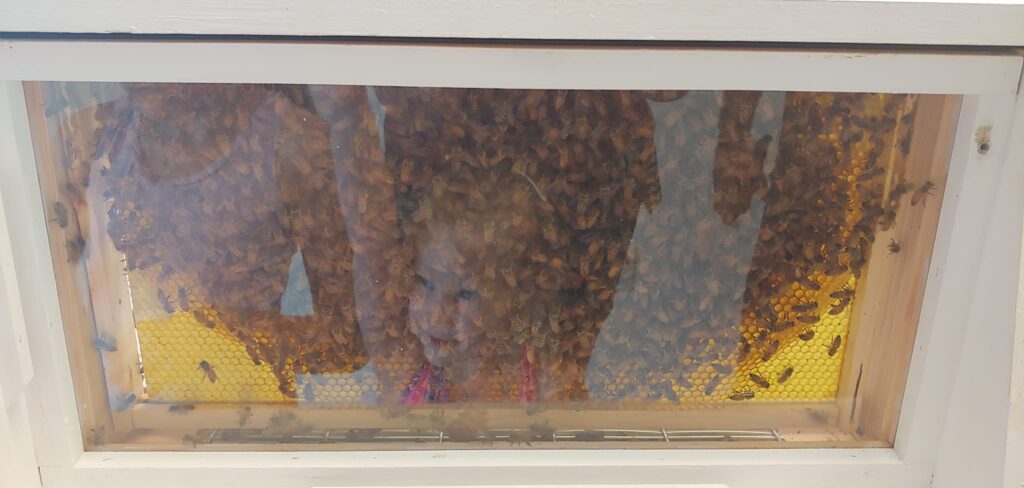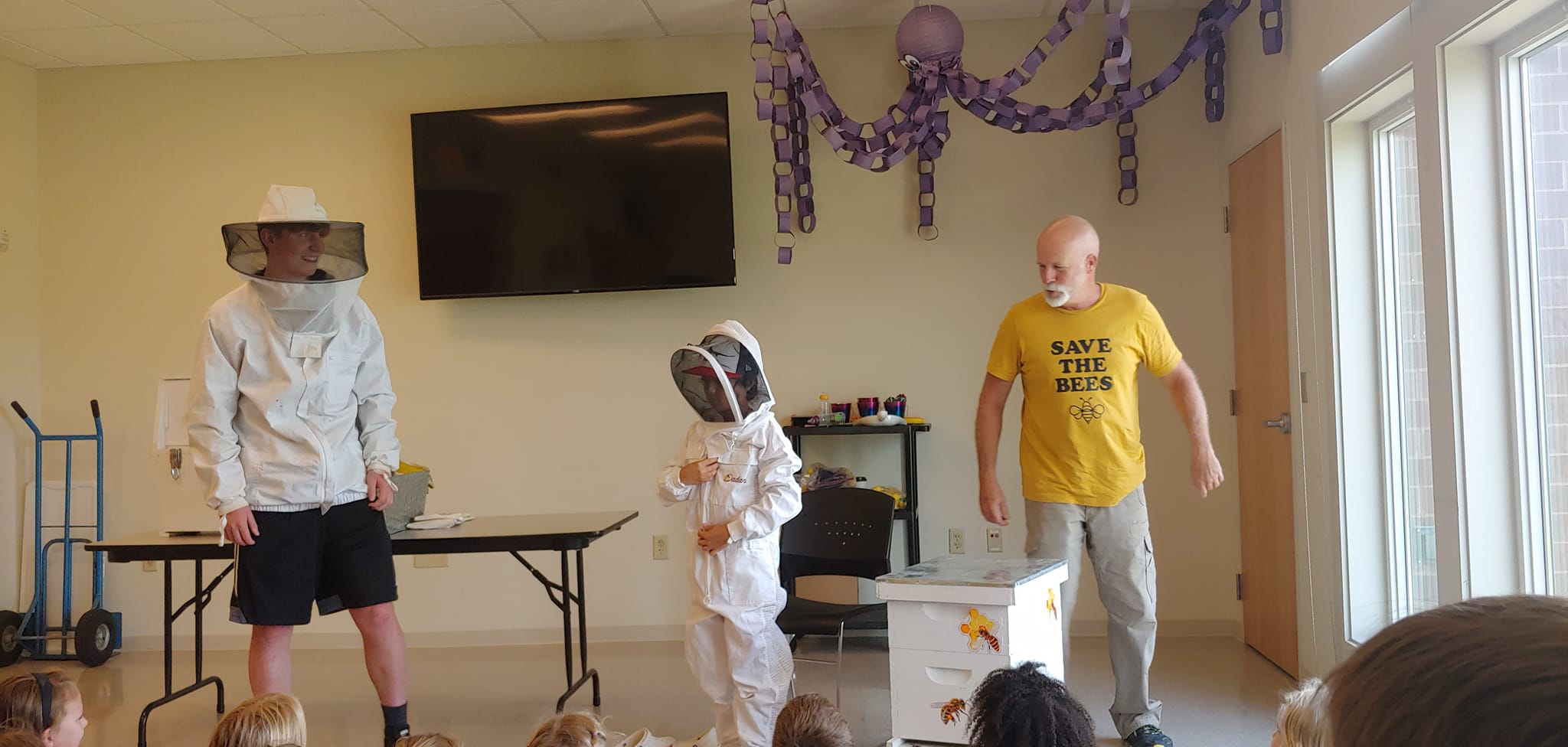So far, we have had a very eventful spring and summer bash, but today we are going indoors and sitting in on a seminar…about bees! The North Sioux City Library is hosting Phil Breed, a
So far, we have had a very eventful spring and summer bash, but today we are going indoors and sitting in on a seminar…about bees! The North Sioux City Library is hosting Phil Breed, a Beekeeping Technician at Dordt University. Having never been to this library, I was pleasantly surprised by how quaint and family orientated it is. I just might have to make this one of my blogging spots for a peaceful retreat while I’m out and about.
Anyways, back to the bees. I took notes because there was a lot to learn, and being that Phil is an expert on beekeeping, and teaches at a local university in Sioux Center, Iowa, I knew I had to pay attention. My husband and I grabbed seats in the back, right behind the fifty, or so, children who were there on summer break. And I think we were the only non-teachers and non-parents there, but we enjoyed the hour-long hands-on lecture.
There’s a lot to learn, so hang on. Here we go!
To start, there are three different kinds of bees in the hive. The drones are the males, and they live up to 14 days. Their job is to basically mate with the queen, but most of the time they don’t get that chance. They actually do not have stingers, and they don’t help produce honey, therefore they die quickly, and are kicked out of the hive. In fact, when approaching a bee box, you may see dead drones littering the base of the hive. That is natural, so don’t be alarmed.
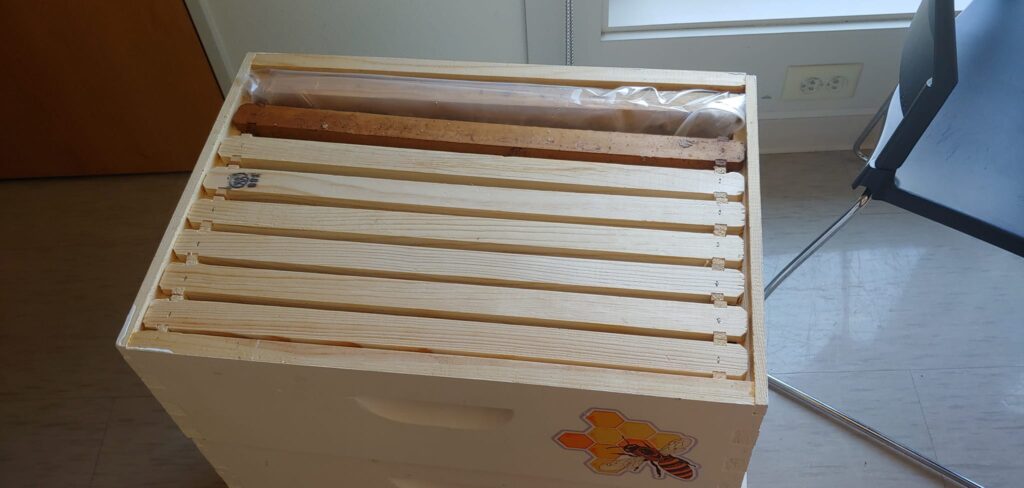
The second kind of bee are the worker bees, who live about 45 days. These are the females, and they do everything from housekeeping, pollinating, finding flowers, making honey and even babysitting the newly hatched baby bees. More than likely, when you see a bee away from its hive, its usually a female, and they have stingers. However, they genuinely do not want to sting you (unlike those nasty wasps) and are out searching for pollen. So, the best thing to do is stay calm, and let her check you out, then she’ll be on her way.
Lastly, there’s the queen. Interestingly, the queen never leaves the hive unless it’s being attacked, and she needs to assist in protecting her colony. The only other time she will ever leave is on her maiden voyage once becoming the queen. On this epic flight, she will mate with around twelve drones, and keep that sperm with her during her entire lifetime. How long does the queen live, you ask? Up to five years! Meaning she will need to accumulate enough sperm to create her colony for years to come. Only needing to mate with a drone when her supplies are low. So, you can see the likelihood of a drone mating with the queen is quite low.
Do you remember?…
Next, let’s talk about the amazing memory of bees. Did you know that the bee memory is far superior to any animal alive on our planet? And currently, there are studies being held to treat Alzheimer’s by focusing on a protein in the bee brain called Prx6, that is also found in our brains, and is known to help protect against dementia.
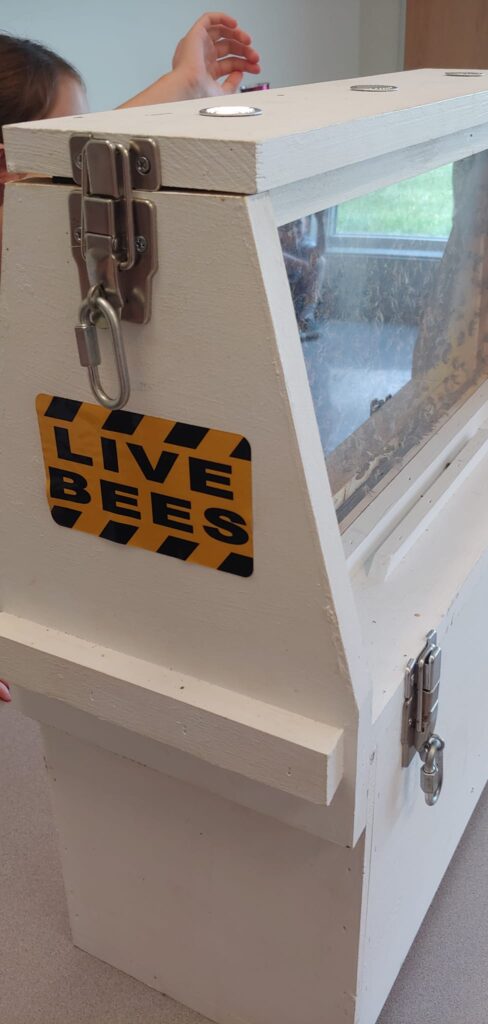
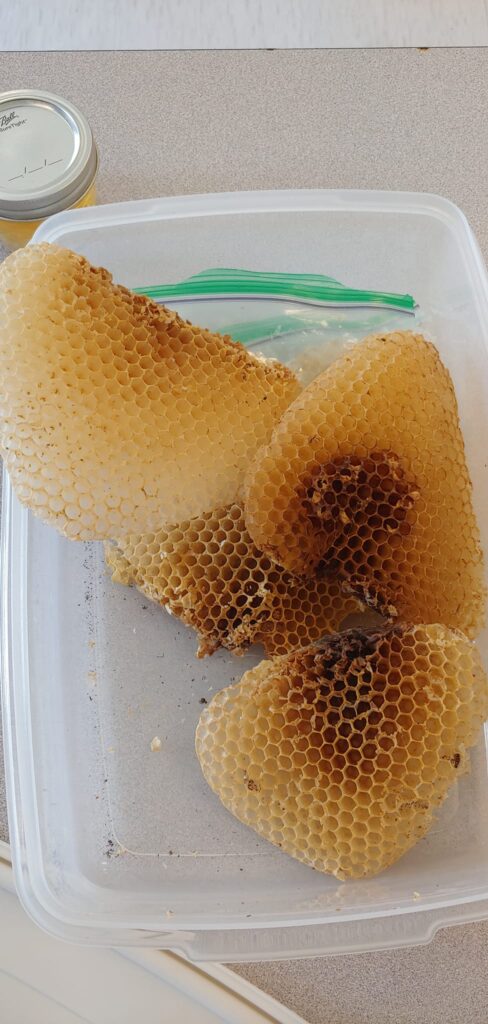
This brain power goes even further, to virtual telepathy. When a worker bee is out exploring her territory and she finds a tasty flower with loads of pollen, she will fly back to the hive, do her little pollen dance (and yes that is a thing!), and tells everyone else about her discovery. With this dance she is able to communicate how far away that flower is, in what direction to fly, and how good the pollen is. That is amazing!
This memory also comes in handy for the beekeeper, since the bees will eventually start recognizing the beekeeper, making it so they won’t need to fully suit up when around their hive. In fact, you may have had a bee hover around your face; they are actually trying to see if they recognize you, and if you are a threat. Once it’s been established that you are a friendly, that one bee, that has been all up in your face, will go back to her hive and communicate with everyone else who you are. No joke.
Threats to the hive
Threats to the hive come in all shapes and sizes, but the biggest fear the bee has is the bear. And in actuality, us humans are the size of bears to those little bees, and if you wear dark colors while approaching the hive, they will think you are a bear, and they’ll attack. Which is why beekeeper suits are always white. Interesting, huh?!
Luckily bears hibernate in the winter, so for half of the year the bees don’t have to worry much about a big scary grizzly. However, those cold winter months are another story. You see bees are pollinators, meaning they usually take flight and are social during the spring and summer, but in the winter is where they need assistance from the beekeeper. I’ve heard a friend tell me that he gives his bees a bowl of chocolate during the winter, and he gets chocolate flavored honey! That would be amazing.
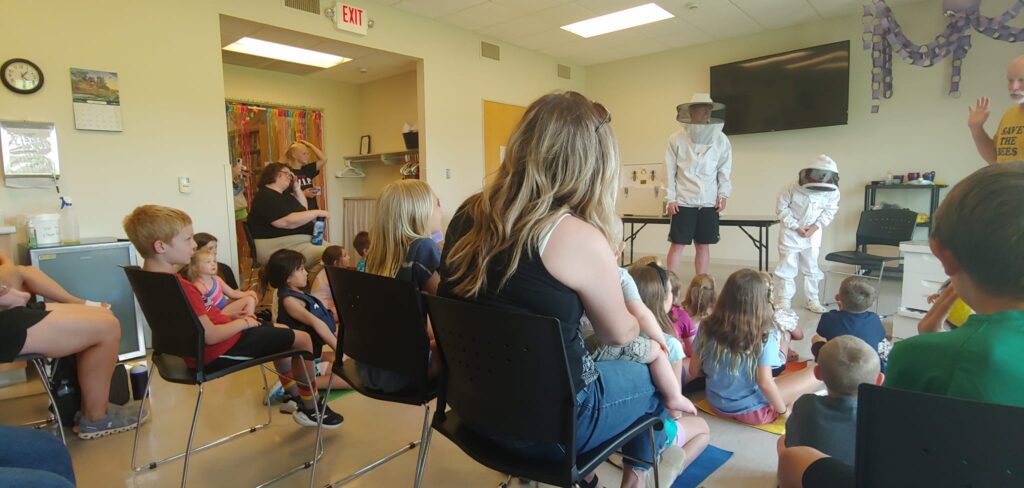
But you may be wondering if they have trouble surviving the cold? Actually, bees are highly intelligent, and will try to survive at all costs. So, when the temperatures start to fall, they huddle together and start to more-or-less vibrate to keep warm. In the beginning of winter, this crowd-effect generates enough warmth to where the hive is at a comfortable 62 degrees. But during the dead of winter, when it’s -10 degrees outside, the internal temperature of the hive can get upwards of 95 degrees!
I’ve even had a local beekeeper at the farmer’s market tell me that he keeps his hives in a non-insulated barn with no heat, and when he opens the door, he is practically sweating by the time he has walked to the back wall. I mentioned before that my friend feeds his bees in the winter, well the beekeeper can actually control where they want the bees to create honey by creating guides on the frames, those are the little slots inside the bee box.
A box of bees
In fact, the bee box is not just a plain box, there is much more to it. Let’s take a tour from the bottom to the top. Situated on an elevated hive stand, the first layer is called the “deep” where all the babies are made. Phil said that when he sees little black spots on the frames, then he knows lots of babies have been there, meaning this is there fecal matter left behind, but this is a sign that his hive is growing. And that hive can grow upwards to 60,000 to 80,000 bees!
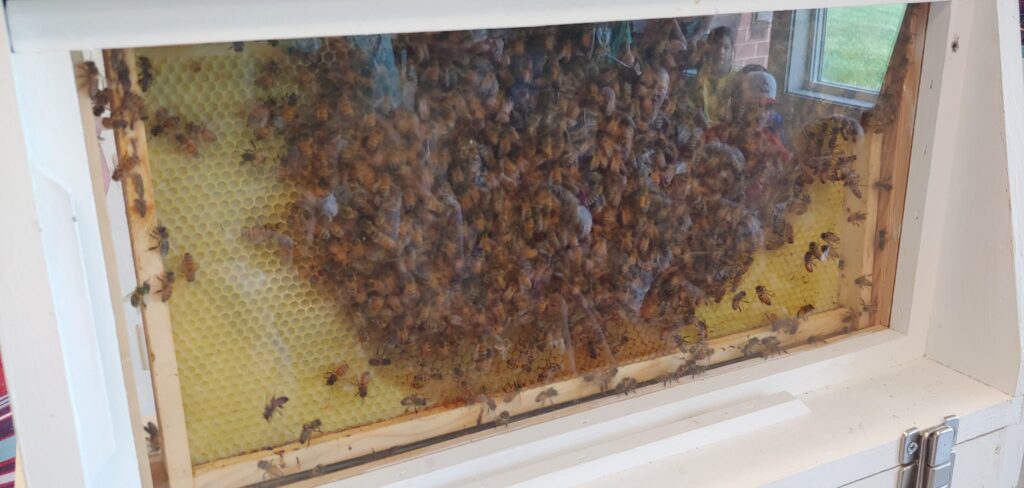
Once the bees are hatched, they go to the second “deep” where they mature, then proceed to the top layer to start making honey. Now, remember, most of the bees in the colony are females, who make all that honey, and if you have nearly 80,000 bees making that golden substance, then that beekeeper is going to be very busy.
This is where having clean frames come in handy, since the beekeeper can quickly and efficiently switch them out when the honey gets too thick. Then the beekeeper can harvest that honey for various reasons, and make several different products. In fact, that honey is not just for us to enjoy, but that sticky treat is the insects’ primary source of carbohydrates, and it also provides our new favorite flying friend with the energy they need for flight, colony maintenance and general daily activities.
Honey, I shrunk the kids
Personally, I love honey, and I have learned over the years to support local bee farms. In fact, when you consume locally sourced honey, you are introducing your body to common allergies, and this introduction helps your body reduce inflammation and other pollen-related symptoms. Studies have shown that eating honey produced within a 50-mile radius of your area is like receiving a natural anti-allergy shot!
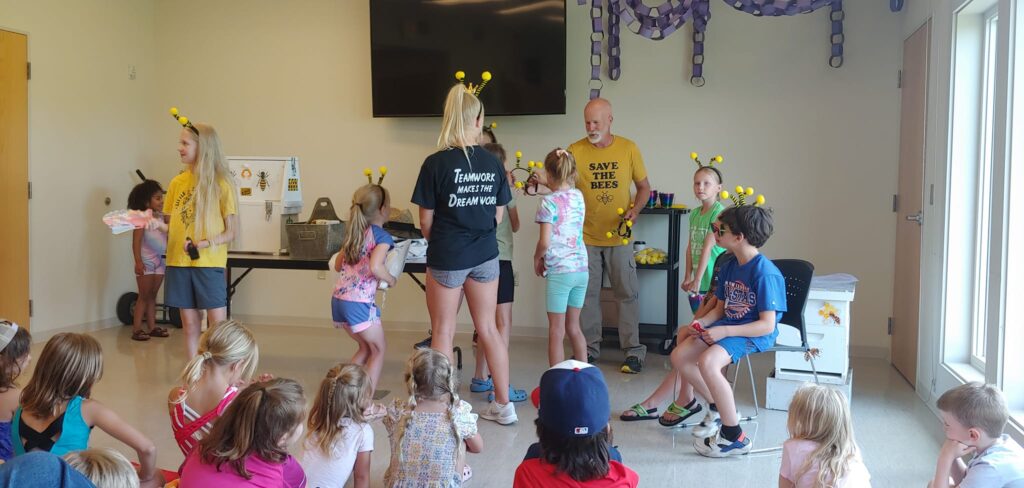
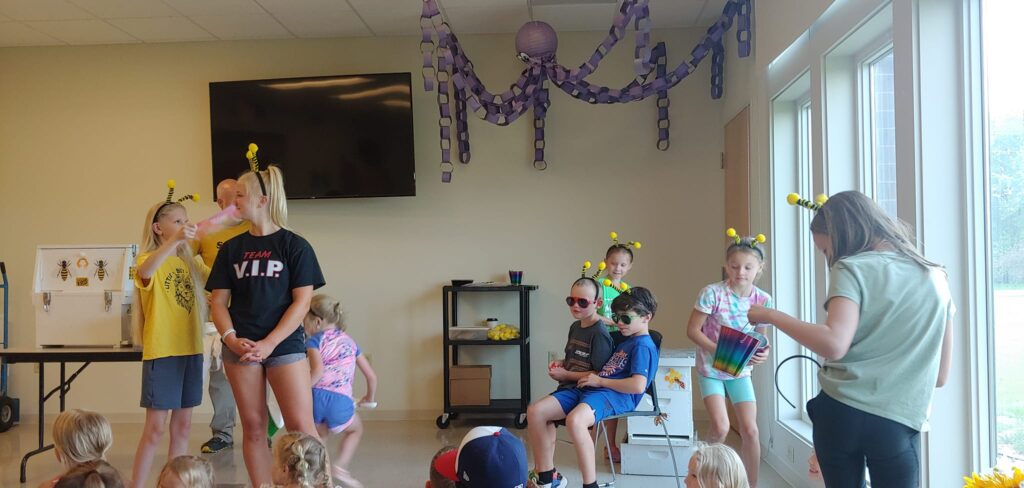
Honey also contains enzymes, antioxidants, vitamins and minerals your body needs. There are many benefits to consuming honey, for example, it promotes digestive health, reduces blood pressure, fights diabetes, prevents tooth decay, and is an antibiotic. Honey can also be used to heal burns and treat wounds. There are so many versatile uses for honey, it’s almost unending. With 27 minerals, 22 amino acids and 5,000 live enzymes, you will feel amazing once you incorporate this sugar-substitute into your diet.
There are lots of forums to read and journals written about bees, but if you would like to learn more, head over to Phil Breed’s Facebook page (https://www.facebook.com/phil.breed.1) and his Facebook group (https://www.facebook.com/groups/502270778303224). I may even have to go to one of his lectures, or make a trip out to his bee farm next summer!
So, now that we have explored the importance of bees and the honey they produce, I hope you have a better understanding as to why it is so important to “Save the Bees”. There are many threats to bees worldwide, including pesticides and habitat removal, but something you can do is plant lots of flowers in your garden, and maybe even look into getting your own bee box! I hope you enjoyed this blog post, because I thoroughly enjoyed writing it!
